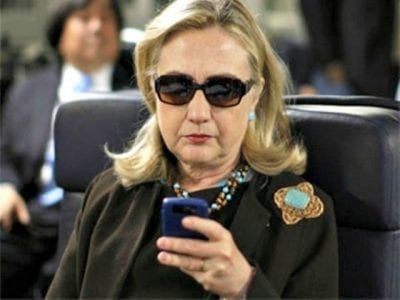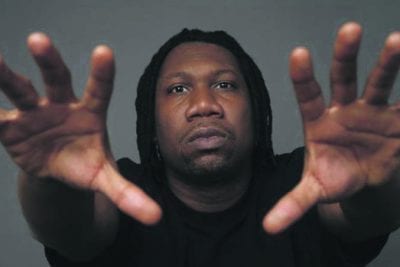 The Washington Examiner reports an audit of the Twitter accounts for the 2016 presidential candidates found Hillary Clinton has the highest percentage of phony followers by far, a whopping 41 percent. This means that of the 4.65 million followers Clinton claims, 1, 906,500 of them might be fakes.
The Washington Examiner reports an audit of the Twitter accounts for the 2016 presidential candidates found Hillary Clinton has the highest percentage of phony followers by far, a whopping 41 percent. This means that of the 4.65 million followers Clinton claims, 1, 906,500 of them might be fakes.
These fake followers were sniffed out with a tool called TwitterAudit, which examines the activity on Twitter accounts and looks for telltale signs of falsehood, such as a very low number of tweets, small numbers of followers, and other metrics combined into an authenticity score. Its creators readily concede the process is not perfect and can have a significant margin of error.
Still, for very large Twitter followings such as those enjoyed by top politicians and celebrities, the audit program delivers interesting results. Fake Twitter accounts often use the default “egg” avatar. You’ve got to fake some eggs to make a popularity omelette these days.
It almost seems like an arms race, because everyone has a lot of fakes. The threshold for “real” popularity is estimated at a mere 60 percent of authentic followers, a standard Clinton’s account narrowly fails to meet. But even the two most “real” followings in the Washington Examiner’s report, Senators Bernie Sanders and Rand Paul, had 10 and 21 percent fake followers, respectively. Sanders has 821,000 followers, so if he’s 90 percent real, that means he’s got about 82,000 false followers.
The highest level of fake Republican followers found by the Washington Examiner’s audit was for Governor Chris Christie, at 36 percent, although Donald Trump and Ben Carson were statistically right behind him at 34 percent each.
There’s no way to tell where the fake accounts come from and no conclusive evidence they are created or paid for by the candidates or their campaign staff. There are services that sell bundles of fake followers, along with plenty of advice from social media analysts to resist the temptation to use them. There is no easy way a politician could prevent outside parties from attaching flocks of false followers to his or her account.
All of the politicians reviewed by the Washington Examiner have impressively large genuine followings, and no obvious reason to tempt fate by Astroturfing to pad out their popularity. If such a purchase were ever discovered and confirmed, the embarrassment would far outweigh any small jolt of prestige to be gained by claiming a 30 or 40 percent boost in social media following.
And yet, there have long been suspicions that political campaigns, or perhaps their ardent supporters, do purchase huge bundles of fake followers. (No prizes for guessing which political figure is the “undisputed king of fake followers.”) Some of the fakes probably build up in pyramids, as organizations with padded Twitter followings flock to candidates they support. It would not be difficult for fairly small groups of people, using the dark arts of social-media illusion, to whip up enormous blocks of phony accounts to show support for their heroes.
This is just one of many ways in which the Internet can be used as a tool to manufacture approval; other recent controversies have included companies buying or creating false positive reviews for their products and massive email campaigns that proved to be largely the work of bots. If the media wasn’t so obsessed with social media, and so interested in finding ways to manipulate public perceptions of popularity, these tricks probably wouldn’t work so well.
Source: Breitbart News



